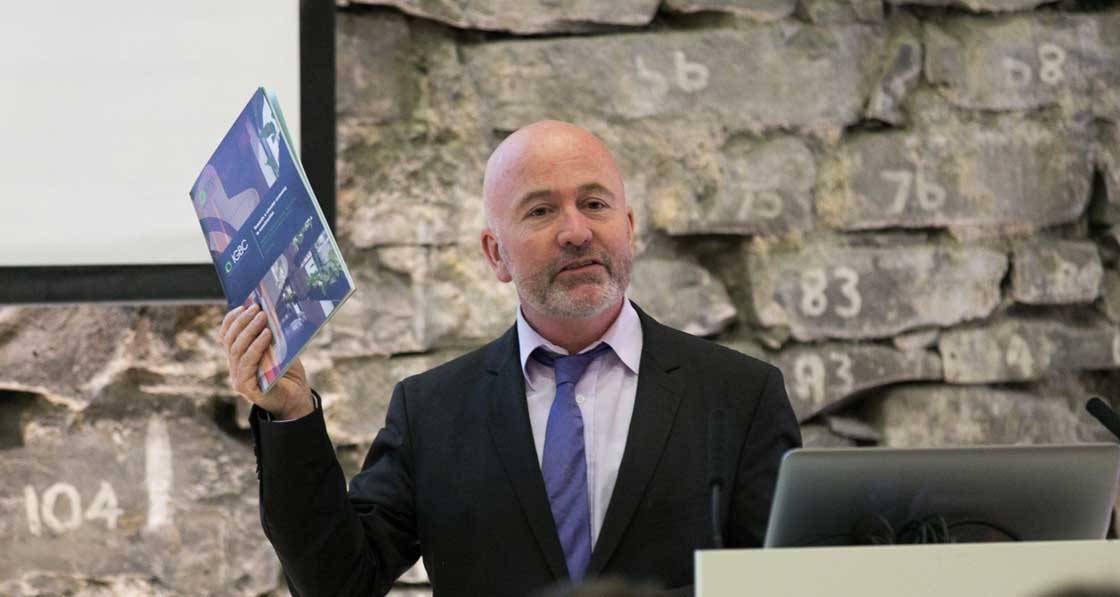
- General
- Posted
Time to move to life cycle assessment of our buildings
New regulations over the last decade have substantially cut operational energy use in buildings, and with more building product manufacturers now publishing environmental data on their products, now is the time to move towards in-depth life cycle assessment to reveal the full environmental footprint of our buildings, Pat Barry of the Irish Green Building Council tells Passive House Plus.
This article was originally published in issue 34 of Passive House Plus magazine. Want immediate access to all back issues and exclusive extra content? Click here to subscribe for as little as €10, or click here to receive the next issue free of charge
If you work in the Irish building industry, you’ve probably seen the growing procession of building material manufacturers publishing environmental product declarations (EPDs) over the last couple of years.
EPDs are a standardised way for manufacturers to display information on the environmental impact of building products. They present data across seven different parameters, including global warming potential (GWP), eutrophication (over-enrichment of aquatic ecosystems), ozone depletion, acidification and natural resource depletion.
EPDs allow architects and other building product specifiers to make more informed choices about the materials they use. In Ireland, the uptake ofePDs has largely been driven by the EPD Ireland programme, which was established two years by the Irish Green Building Council (IGBC).
But speaking to Passive House Plus, IGBC chief executive Pat Barry says the group’s ultimate goal is not just for more manufacturers to have EPDs, but ultimately, for designers and procurers to use EPDs as the basis of doing whole life cycle assessments (LCAs) of their buildings.
“Whole life cycle assessments allow you to see where the ‘hotspots’ in a building are in terms of the carbon footprint of materials, and can help you to design them out,” he said.
“And those doing LCAs can also use them to compare one building design proposal against another in terms of carbon footprint.”
Earlier this month, leading Irish contractor John Sisk & Sons became the latest company to sign the IGBC’s environmental product declarations commitment to ask for EPDs, and to prefer products withePDs where possible (within procurement rules).
Simple, efficiently designed buildings require less materials and thus have less environmental impact.
Other companies and organisations to have signed the commitment to date include Dublin City Council, Coady Architects, Wain Morehead Architects, Transport Infrastructure Ireland and BDP.
Ultimately the more procurers that look for EPDs, the more manufacturers are likely to develop them, and the more products that have them, the easier it then becomes to carry out LCAs.
“We need to be measuring carbon footprint and environmental impact at the building level, as well as at the product level,” Pat Barry said. “If you only look at the carbon footprint of the product, you miss the opportunity to optimise and rationalise your building design in order to reduce its carbon impact.” Passive house designers will be familiar with this principle: you look at the whole building and, ideally, make its form as simple and efficient as possible in order to reduce heat loss and avoid complex junctions, which are more difficult to detail.
And there’s a similar principle at play here — simple, efficiently designed buildings require less materials and thus have less environmental impact and a smaller carbon footprint.
“I’ve seen analyses that underground car parks can add something like 7% to the whole life cycle carbon footprint of a building,” Pat Barry said. “Doing an LCA of a whole-building design would flag this at design stage and perhaps give you the opportunity to work with planners to reduce the need for underground car parking.”
“Equally we see a lot of detached housing schemes now with only one metre or so of space between units — so it’s detached in name only really, because that fetches a higher price. But this doubles the number of party walls you need to build and increases the amount of foundations you need as well. That’s a big environmental impact.”
One obstacle to producing accurate LCAs for Irish buildings at the moment is the lack of local environmental data for cement and concrete.
“While some of the sectors like insulation have been very progressive in providing EPDs, we would really like to see some of the manufacturers of the highest impact products like cement and readymix concrete also provide EPDs,” Pat Barry said.
EPDs for specific products are the most reliable form of life cycle data, followed by verified data from trade organisations, and after that, generic data for broad product categories, from sources such as academic studies.
“At the moment we don’t have any national data for cement, all that’s being used is more generic European-wide data, which is of lesser quality. Having national data for cement would allow us to more accurately quantify the carbon footprint of our buildings.”
For more information see www.igbc.ie/epd-home.
- Issue 34
- Irish Green Building Council
- life cycle assesment
- environmental product declaration
- EPDs
- Irish news
Related items
-
 #BuildingLife Series: Director at CORA Consulting Engineers, John Casey
#BuildingLife Series: Director at CORA Consulting Engineers, John Casey -
 Green homes and finance join forces for growth
Green homes and finance join forces for growth -
 Hotel demolition judicial review could set embodied carbon precedent
Hotel demolition judicial review could set embodied carbon precedent -
 ZEB Summit celebrates Irish passive progress
ZEB Summit celebrates Irish passive progress -
 Irish and British associations unite for conference as passive house explodes
Irish and British associations unite for conference as passive house explodes -
 IGBC launches case studies to drive nature-led construction
IGBC launches case studies to drive nature-led construction


